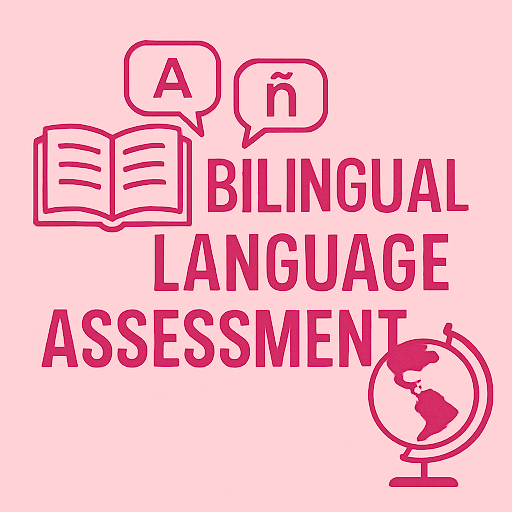How to Evaluate Bilingual and Multilingual Students for Speech-Language Disorders
Best practices for assessing speech and language skills in culturally and linguistically diverse students

You get a referral:
"This student speaks Spanish at home and English at school. They're not following directions, and their vocabulary seems weak."
Now you're on the hook for an evaluation. But evaluating a bilingual or multilingual student isn't just "business as usual." It requires cultural sensitivity, linguistic nuance, and legal awareness — because misdiagnosing a language disorder in a multilingual child can have long-lasting academic and emotional consequences.
In this article, we'll walk through how to:
- Spot the difference between a true disorder and second language influence
- Use the right assessments and tools
- Communicate findings clearly to families and IEP teams
Step 1: Understand the Language Profile
Before testing, gather detailed info:
- Which languages does the child hear and speak regularly?
- When did they start learning each language?
- Are they exposed to formal education in both?
- What's the dominant language for comprehension vs. expression?
This can be done via parent/caregiver questionnaires, interpreter interviews, or intake forms. Without this step, any test data risks being misleading.
Step 2: Know the Difference Between Disorder and Difference
Language differences are expected in bilingual learners. A disorder exists in all languages, not just the one being acquired.
Red flags of a true disorder include:
- Difficulty learning any language, even the home language
- Errors not typical of bilingual acquisition (e.g., severe word retrieval issues, disorganized narratives)
- Slow progress despite rich exposure
- Family history of communication challenges
✅ Compare performance across both languages whenever possible.
Step 3: Choose Your Assessments Wisely
No test can fully capture bilingual ability — but some tools can help.
✅ Preferred Approaches
- Bilingual versions of standardized tests (e.g., CELF-5 Spanish)
- Dynamic assessment: test → teach → retest to assess learning potential
- Language sampling in both languages
- Parent/teacher rating scales like the ALDeQ or BESA
⚠️ Use Caution With:
- Monolingual English tests
- Percentile cutoffs designed for monolinguals
- Making eligibility decisions based on one language only
Your clinical judgment is just as important as the numbers.
Step 4: Involve Families (In Their Language)
When possible:
- Use interpreters during interviews and meetings
- Translate reports or key findings into the home language
- Ask families how the child communicates at home — socially and academically
And explain the evaluation process in plain, respectful language:
"We're looking at how your child uses both languages, not just English, to see if they're developing communication skills as expected."
Step 5: Describe Results in Context
Avoid phrases like:
- "The student has poor English skills."
- "They performed below average."
Instead, write:
"Testing in English may underestimate the student's true ability due to ongoing language acquisition. Observations and dynamic assessment suggest strength in concept learning, with challenges in grammatical accuracy across both languages."
Step 6: Make a Thoughtful Recommendation
Qualify a student only if:
- There's evidence of difficulty across both languages
- The deficits affect access to education or daily life
- The student would benefit from structured speech-language intervention
If not, recommend:
- Continued classroom support
- Monitoring progress
- Strategies for teachers and caregivers
- Re-evaluation if concerns persist
How SLP Score Supports Bilingual Evaluations
SLP Score helps you document bilingual and multilingual evaluations with clarity and accuracy:
- Add observations and ratings from both home and school
- Embed dynamic assessment data alongside formal scores
- Customize language sample summaries and narrative reports
- Export to Google Docs or Word in minutes
Because multilingual evaluations require more than numbers — they require a full story.
Serve Bilingual Students with Nuance, Accuracy, and Confidence
Start your next report with SLP Score and ensure every multilingual evaluation tells the complete story.
Start Here →